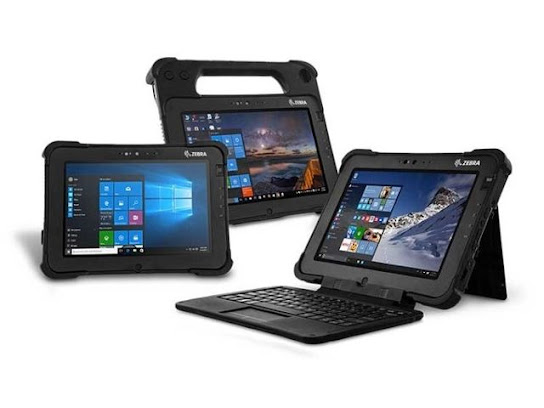It's a brutal world out there for Ruggedized tablets: they might be dropped, bumped, poured on, or just rattled about every day. And that's just on a typical working day; if you use your Ruggedized tablet outside while travelling, or in a construction zone, your chances of a tragedy skyrocket. This failure rate should be unacceptable for organizations today unless you wish to regard tablets as disposable.
Performing
to a standard
The Military Standard 810 Grating (also known as MIL-STD-810G) is the gold standard for ruggedized tablets. It is a set of standards used by the US Department of Defense to evaluate mobile computers. The 810G standard provides a number of tests, including 48-inch fall into two inches of plywood over concrete, temperature (high and low) ill-treatment, and humidity, altitude, and vibration resistance testing.
Ruggedized tablets have shock-mounted major components, reinforced frames, robust skins, waterproof seals, toughened glass, soft corner bumpers, and shock-mounted major components. To put it another way, if regular consumer tablets can be compared to sports (or budget) vehicles, tough tablets maybe compared to tanks.
I gathered three of the newest Windows-based worker-proof slates to see what the current state of the art is for rugged tablets: the Mobile Demand x Tablet Flex 10, the Getac F110, and the Panasonic Toughpad FZ-G1. Samsung's Galaxy Tab Active, a strengthened Android tablet, was also tested.
Ruggedized tablets are substantially bigger and heavier than their consumer-oriented relatives in exchange for their ruggedness. As an example, the present 9.7-in. The smallest and lightest of the three Windows systems evaluated here is one inch thick and weighs twice as much as the iPad Air 2, which weighs just under a pound and is roughly a quarter of an inch thick. The Galaxy Tab Active is lighter than the iPad Air 2 and Samsung's own 8.4-inch Galaxy Tab S, which weighs 10.37 oz, but it is still heavier than less durable tablets like the iPad Air 2.
Another way to get a ruggedized tablet closer to becoming
indestructible is to:
Cover it with a protective cover that will reduce the impact of a fall while keeping water out. The combined system and pad, on the other hand, are frequently larger and heavier than a completely ruggedized tablet. For example, HP produces a ruggedized version of their Elite Pad 1000 tablet, which weighs more than 3 pounds and is 1.3 inches thick.
Finally, protection isn't cheap: most ruggedized tablet systems cost two to three times as much as their non-ruggedized counterparts.
Getting a consumer tablet, on the other hand, is a false economy at work because it will almost certainly cost more in the long run.
The ruggedized Getac F110 is easily the largest, heaviest, and most costly of the ruggedized tablets. The tablet is protected by a textured polycarbonate shell that is mounted on a sturdy magnesium frame. Polycarbonate and ABS plastic bumpers are sculpted into the case's edge. Gorilla Glass II protects the screen. The ports are covered, and the bottom has a sealed docking connector.
Ruggedized tablets aren't quite thin and light, but they're
near enough to a consumer tablet while still being tough. The casing on the
ruggedized tablets is made of smooth polycarbonate plastic and feels sturdy.
Its primary components are fastened together to form an internal frame on the
inside. To keep dirt, water, and dust out of the system's ports, it includes a
sealed docking connector with silicone tabs. Soft silicone bumpers protect the
screen from drops, but they fit loosely at the edges and extend 0.2 inches over
the screen, making it difficult to operate with.
